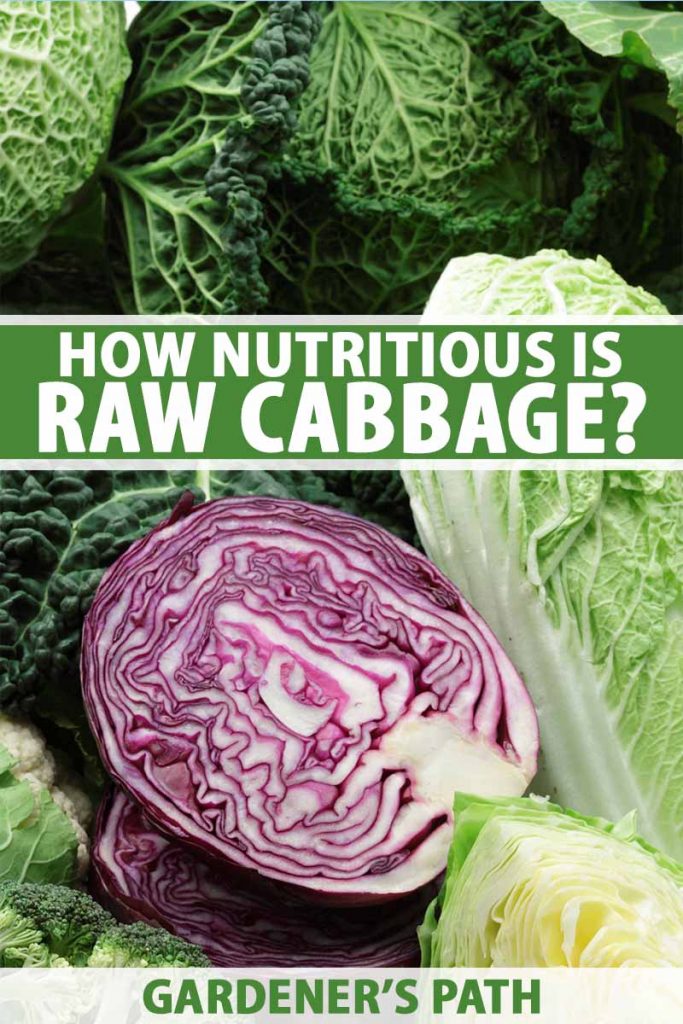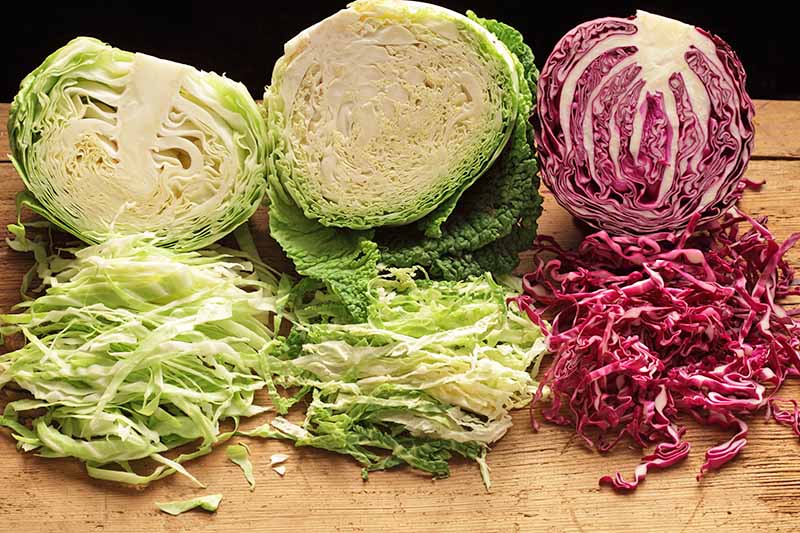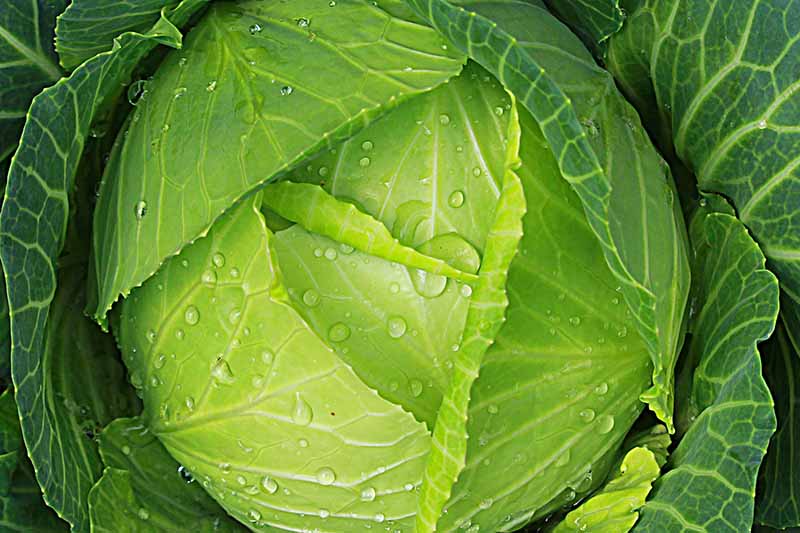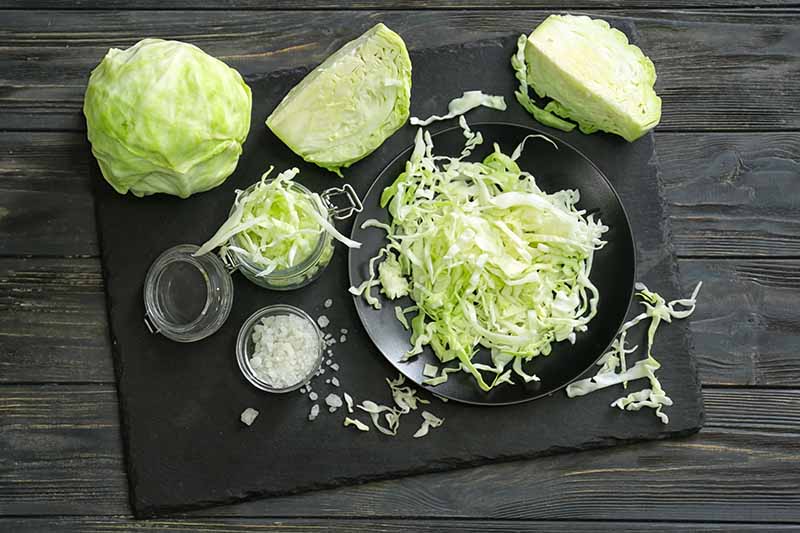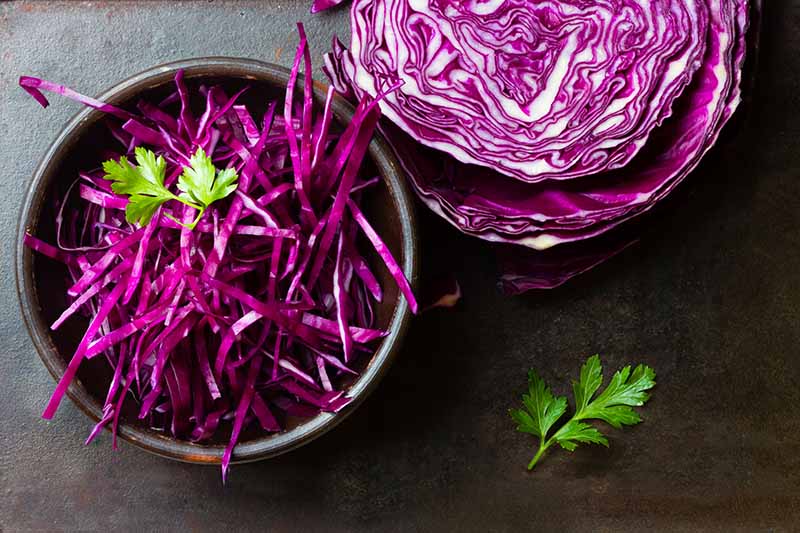We link to vendors to help you find relevant products. If you buy from one of our links, we may earn a commission. And while it isn’t as trendy as kale or cauliflower, it is surprisingly nutritious.
Nutritional Composition
As with many other cruciferous vegetables, this one is low in calories, yet high in many important vitamins and minerals.
For example, 1 cup of raw cabbage provides approximately:
22 calories 2 grams of fiber 85% of the recommended daily value (DV) for vitamin K 54% of the DV for vitamin C
Vitamin K is important as it plays a role in bone health and helps with blood clotting. Vitamin C works to keep your immune system strong and supports the growth of bone, collagen, and other important tissues. It’s also needed for the body to be able to absorb iron. It is a good source of folate and vitamin B6 as well, both of which are needed for energy metabolism and nervous system functioning. It’s also rich in minerals – potassium, calcium, and magnesium.
Not too shabby for just 22 calories. And we can’t forget about fiber. Cabbage is high in both insoluble and soluble fibers. While both are important for our health, they have different roles:
Soluble fiber supports healthy gut bacteria and heart health, and slows digestion.
Insoluble fiber keeps the digestive system running smoothly and regularly, and can help to prevent or treat constipation.
Plus, we haven’t even mentioned that it’s also high in several disease-fighting antioxidants, including beta-carotene, flavonoids, and sulfur compounds. It’s worth noting that while all cabbage is a good source of antioxidants, purple and red varieties are particularly rich in anthocyanins – a pigment with antioxidant properties that is found in other red-purple plant-based foods including blueberries and black rice.
Fermented Cabbage May Be Good for Gut Health
In addition to coleslaw and soups, this vegetable is also commonly found in fermented foods such as sauerkraut and kimchi.
Sauerkraut is a fermented German dish made by combining shredded cabbage, salt, and caraway seeds in a jar or fermentation crock. Over the course of 2-5 weeks, beneficial Lactobacillus bacteria begin to grow, resulting in a tart, slightly sour taste. Another popular fermented condiment is kimchi. Commonly found in Korean cuisine, the popular paechu kimchi has a few more ingredients than sauerkraut. Usually made with Napa cabbage, it may also contain fish sauce, soy sauce, ginger, garlic, red pepper flakes, scallions, and shrimp. However, instead of requiring a few weeks, kimchi usually takes just 1-5 days to ferment. Both of these fermented condiments result in the growth of beneficial bacteria known as probiotics.
When you eat them, these probiotics help to promote the growth of even more healthy bacteria in your gut, which has been associated with a range of benefits from better digestive health to reduced risk of chronic diseases and improved mental health. Boosting beneficial bacteria may also improve absorption of several nutrients and promote the production of vitamin K and B-vitamins. You can read more about healthy fermented foods on our sister site, Foodal.
Does Cooking Affect the Nutrient Content?
Do you prefer your cabbage raw or cooked? While the raw vegetable is a staple ingredient in coleslaw and salads, many people find cooking it more appealing, as some varieties can be quite bitter. However, cooking does more than just reducing bitterness. It can also lead to some nutritional losses. A study published in the Journal of Food Chemistry in 2014 found that the raw purple variety had significantly higher amounts of antioxidants, vitamins, and minerals compared to steamed, stir-fried, boiled or microwaved. This vegetable also contains sulfur compounds which have also been shown to decrease when cooked. This is also why when it’s cooking it can start to have an unpleasant smell, as the sulfur compounds are being released. But what if you prefer it cooked? Steaming was found to retain the most antioxidants and vitamin C compared to other cooking methods, making this a good option if you don’t like it raw.
Additionally, for those who find raw cabbage difficult to digest, cooking it and eating smaller portions may help prevent or reduce GI side effects. Overall, if you choose to cook it, the shorter the cooking time and less water used, the more nutrients it will retain. If you need inspiration for what to do with raw cabbage, try the delicious homemade coleslaw recipe from our sister site, Foodal. Or check out this recipe on Foodal for salmon tacos with red slaw. And while it’s easy to add to salads or soups, it is a versatile ingredient that can be incorporated into a variety of cuisines. Are you a fan of raw cabbage? Share your favorite ways to enjoy it in the comments below. Inspired to get growing? You’ll need these guides:
How to Plant and Grow Cabbage Identify, Prevent, and Treat Common Cabbage Diseases How to Keep Slugs Off Cabbage and Other Cole Crops How to Harvest Cabbage
© Ask the Experts, LLC. ALL RIGHTS RESERVED. See our TOS for more details. Uncredited photos: Shutterstock. Additional writing and editing by Clare Groom and Allison Sidhu. The contents of this article have been reviewed and verified by a registered dietitian for informational purposes only. This article should not be construed as personalized or professional medical advice. Gardener’s Path and Ask the Experts, LLC assume no liability for the use or misuse of the material presented above. Always consult with a medical professional before changing your diet, or using supplements or manufactured or natural medications.
